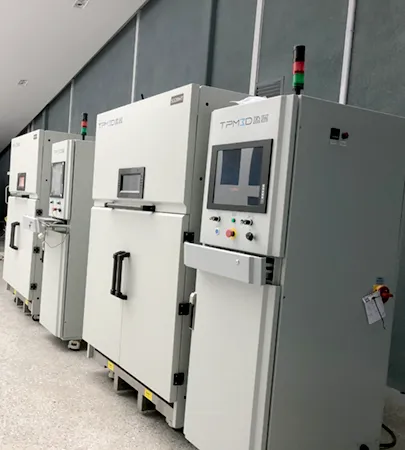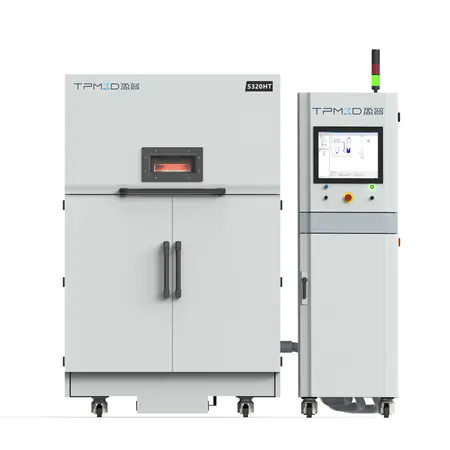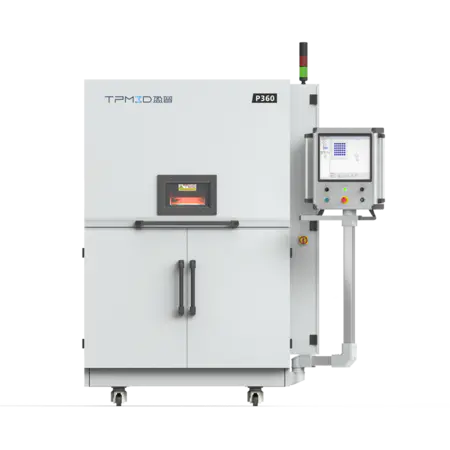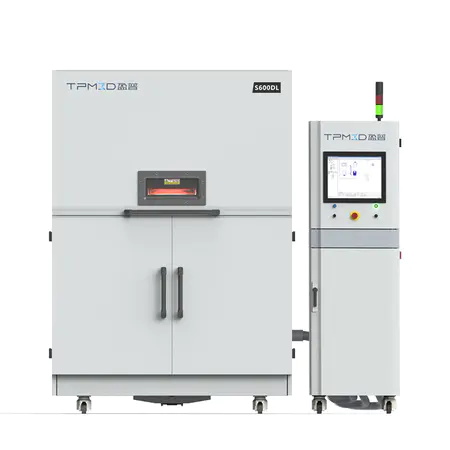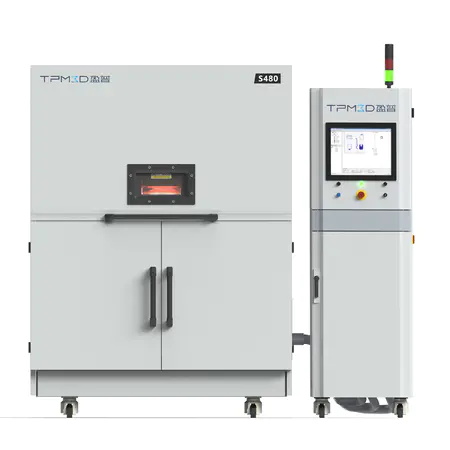TPM 3D Asia Advanced Materials Printing Center
TPM 3D Asia advanced materials printing center located in Jiangsu Province, cover the area with more than 1000 m2. The center consists of intelligent manufacturing 3D printing display platform, industrial and advanced materials intelligent printing center, medical sterile R&D experiment labs, and SLS post processing center and multimedia conference zone.
3D Printing Digital Medical Center
The center construction includes three phases, we can provide orthopedic insoles, orthopedic pillows, scoliosis braces, knee orthoses, application of surgical guides for head, pelvis, spine and knee joints and 3D printing of braces, as well as orthopaedic standardized implant products development.
Our research
TPM3D has successfully developed 10+ laser sintering additive manufacturing systems, and more than 10 kinds of polymer powder printing material for high-quality parts manufacturing, has more than 30 national patents as well.
Related Products
More items about sls industrial printer
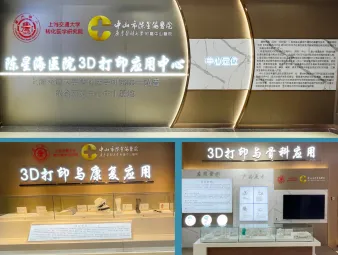
We Have The Best Solutions for Your Business
TPM3D technical team has been engaged in industrial 3D printing business since 1999 and has become the industry brand with 20 years focusing on 3D printing service。
TPM3D has various customers at home and abroad from the fields of automobile, electrical appliances, electronics, medicals, cultural & creative, education, aerospace, such as Guangzhou Automobile, Dongfeng Motor, Gree Group, LG Electronics, TTI, Fohan Service Bureau, Tongji University, Southern University of Science and Technology, University of Texas at Austin, and Massey University Auckland.
SLS Industrial Printer Use
SLS industrial printers are used to produce three-dimensional objects by sintering powdered materials, such as plastic, metal, or ceramic, layer by layer. The printer uses a laser to selectively sinter the material, bonding the particles together to form a solid structure.
To use an SLS industrial printer, the operator first designs the part or product using computer-aided design (CAD) software. The design is then sliced into thin layers and converted into a file format that the printer can read. The operator loads the material and the file into the printer and initiates the print process.
The printer deposits a thin layer of powdered material onto the build platform and then uses a laser to sinter the material according to the design. The build platform then lowers slightly and the process is repeated until the entire part or product is complete. The finished object is then removed from the printer and may require post-processing, such as sanding or finishing, to achieve a smooth surface finish.
SLS industrial printers are used in a variety of industries, including manufacturing, aerospace, automotive, and medical devices. They are often used for prototyping, low-volume production, and the production of customized and complex parts and products.
Features of SLS Industrial Printer
SLS (Selective Laser Sintering) is a 3D printing technology that uses a laser to sinter powdered materials, such as nylon or polystyrene, into a solid structure. Some common features of SLS industrial printers include:
High resolution: SLS printers can produce parts with fine features and high resolution, making them suitable for producing complex and detailed geometries.
Wide range of materials: SLS printers can use a variety of materials, including plastics, metals, and ceramics, allowing for the production of a wide range of parts and products.
High strength and durability: SLS-printed parts tend to be strong and durable due to the high-energy laser beam used to sinter the material.
Large build volumes: Industrial SLS printers often have large build volumes, allowing for the production of large parts or multiple parts at once.
Fast printing speeds: SLS printers can produce parts quickly, making them suitable for high-volume production.
Post-processing: SLS-printed parts may require post-processing, such as sanding or finishing, to achieve a smooth surface finish.
High upfront cost: SLS industrial printers can be expensive to purchase and maintain, making them more suitable for larger businesses or manufacturers with high production volumes.
SLS Industrial Printer Application
SLS industrial printers are used in a variety of applications, including:
Prototyping: SLS printers can quickly produce high-quality prototypes, allowing designers and engineers to test and iterate on their designs before moving to mass production.
Manufacturing: SLS printers can be used to produce end-use parts and products, such as automotive parts, aerospace components, and medical devices.
Tooling: SLS printers can produce low-volume production tools, such as molds for injection molding or dies for stamping, at a lower cost than traditional manufacturing methods.
Education and research: SLS printers are often used in educational and research settings to study and explore the capabilities of 3D printing technology.
Art and design: SLS printers can be used to create complex, sculptural works of art and design pieces.
Customization and personalization: SLS printers can be used to produce customized and personalized parts and products, such as personalized jewelry or customized sporting goods.
Repair and maintenance: SLS printers can be used to produce replacement parts for maintenance and repair, reducing downtime and improving efficiency.
Advantages of SLS Industrial Printers
There are several advantages to using SLS industrial printers, including:
-
High resolution: SLS printers can produce parts with fine features and high resolution, making them suitable for producing complex and detailed geometries.
-
Wide range of materials: SLS printers can use a variety of materials, including plastics, metals, and ceramics, allowing for the production of a wide range of parts and products.
-
High strength and durability: SLS-printed parts tend to be strong and durable due to the high-energy laser beam used to sinter the material.
-
Large build volumes: Industrial SLS printers often have large build volumes, allowing for the production of large parts or multiple parts at once.
-
Fast printing speeds: SLS printers can produce parts quickly, making them suitable for high-volume production.
-
Customization: SLS printers can be used to produce customized and personalized parts and products, such as personalized jewelry or customized sporting goods.
-
Reduced waste: SLS printers produce little to no waste, as the unused powdered material can be recycled and reused in future prints.
-
Reduced tooling costs: SLS printers can produce low-volume production tools, such as molds for injection molding or dies for stamping, at a lower cost than traditional manufacturing methods.
-
Reduced lead times: SLS printers can produce parts on-demand, reducing lead times and improving supply chain efficiency.
-
Increased design freedom: SLS printers allow for the production of complex and geometrically complex parts that may not be possible with traditional manufacturing methods. This can lead to the development of innovative new products and designs.
User Reviews
What users say about TPM 3D printing
Frequently Asked Question
Do you have any question?
The speed at which an industrial SLS printer can print depends on a number of factors, including the size and complexity of the object being printed, the material being used, and the capabilities of the printer. In general, SLS printers are relatively fast compared to other 3D printing technologies, with some models able to print at rates of up to 100 cm3/hr.
Industrial SLS printers are used in a variety of industries, including aerospace, automotive, and medical device manufacturing. They are particularly useful for producing complex geometries and high-quality parts with a high degree of accuracy and repeatability. SLS printers are also used in prototyping and research and development, as well as in the production of end-use parts for a variety of applications.
Industrial SLS printers are known for their high level of accuracy and repeatability. They are typically able to produce parts with a high degree of dimensional accuracy and surface finish quality.
Industrial SLS printers are capable of using a wide range of materials, including metals, plastics, and ceramics. Some common materials used in SLS printing include nylon, polycarbonate, and aluminum.

